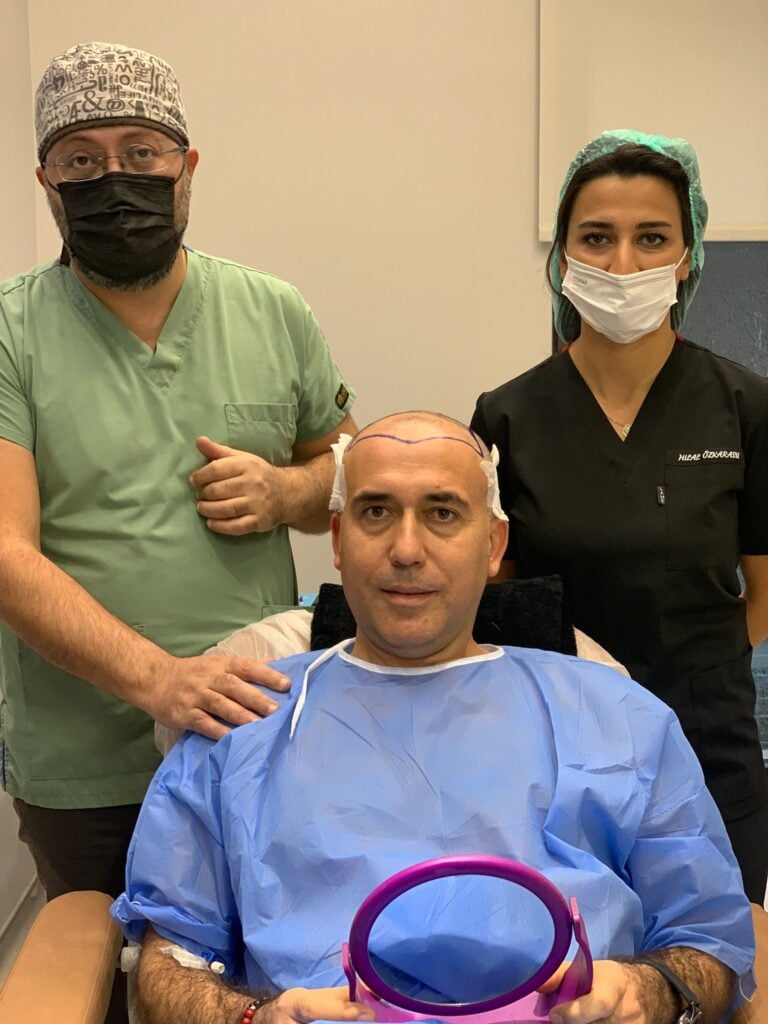You probably already know a lot about what a hair transplant involves if you’re thinking about getting one. But it can be hard to discover a basic, straightforward description of how the whole thing works. That’s why we’ve made this guide: to show you exactly what happens when you decide to go ahead with hair restoration, step by step.

Beginning with a Consultation
A talk is the first step in any trip. We take the time to learn what you’re looking for in our initial meeting, whether it’s online or in person. We’ll ask about your hair loss history, look at your current hair, and discuss honestly about what can be done.
We don’t think it’s right to rush or push anyone. We are here to assist you understand your choices, answer your concerns, and make sure you feel good about moving forward. We also decide at this point which method—FUE, DHI, Sapphire FUE, or another one—might be best for you.
Making Plans for the Treatment
We start constructing a personalized treatment plan as soon as we agree to move forward. This includes making a map of your existing hair and planning out your future hairline so that it looks good on your face.
At this point, we also figure out how many grafts we need and where to get them. We always care about the health of the donor area because keeping your entire appearance in balance is just as important as recovering fullness in a single place.
The Day of the Operation
We go over everything with you again on the day of your treatment so you know what to anticipate. We start the extraction process after giving local anesthesia. We carefully and precisely remove healthy hair follicles from the donor location one at a time.
The next stage depends on the method we utilize. For FUE, we prepare the area first, and for DHI or Implanter Plus, we implant straight with equipment like the implanter pen. Every action is done with care. We pay special attention to the angle, density, and direction of each graft so that the final look is one that fits you perfectly.
Most procedures last a few hours, but you’re awake and comfortable the whole time. We give you breaks, explain the process to you, and make sure you’re comfortable the whole time.
Aftercare and Recovery
You will get all the information and help you need to take care of your scalp right after the surgery. During the first several days, you should cleanse the area gently, avoid putting pressure on it, and let the healing commence.
It’s common for the area to swell or get light scabs, and this will go away in a week. Most people go back to work or their normal lives in just a few days, especially if the surgery didn’t involve shaving.
We keep in touch with you a lot during this time. You can always get in touch with us if you have any questions, no matter how little.
Seeing Results Over Time
It’s crucial to have reasonable expectations because hair doesn’t grow overnight. It’s common and expected for transplanted hairs to fall out in the first few weeks. Around the third month, new growth normally starts, and you can see improvements every month after that.
A lot of people may already observe a major difference by the sixth month. And by the time 9 to 12 months have passed, the final results are obvious. What you receive is hair that stays in place and mixes in with the rest of your scalp—no gimmicks, no illusions.
What Sets Them Apart
We know that taking a careful, step-by-step approach leads to better results and happier patients. It’s not only the method that makes a difference. It’s the planning, the listening, and the consistency from start to finish.
When both sides trust each other, this approach works well. And it all starts with being clear, talking to each other, and caring.
Last Thoughts
The whole experience of getting a hair transplant is important, not just the procedure. We’re with you from the first appointment to the time your hair starts to grow back every month. And we take that duty very seriously.
We are here to listen if you want to talk. No stress, no push—just honest help along the road.


